Watershed Dog Permits
I have been asked several times about my position on the watershed dog permit program in Big Cottonwood Canyon. I’ll preface my answer by saying that I grew up with dogs, and I like most of them. I know many people see their dogs as family members and would prefer to take them anywhere without restrictions.
However, Big Cottonwood Canyon is not like most places. There is a very good reason the general public is strictly prohibited from bringing dogs into the canyon: the canyon is a protected watershed. When dog waste enters the water system, it can transmit diseases harmful to humans (note: section 4.3.4. of the Salt Lake Valley Health Department: Watershed Regulation does permit transport of dogs through Big Cottonwood Canyon if Guardsman Pass Road is open).
The four protected watershed canyons of the Wasatch Front – City Creek, Parleys, Big Cottonwood, and Little Cottonwood – supply the majority of Salt Lake City’s drinking water. For decades, dogs have been prohibited in these areas to protect water quality. When visitors dismiss these rules as unnecessary, it is usually because they are unaware of their importance. Violations of watershed regulations within these canyons are classified as Class B misdemeanors.
Note: Exceptions are made for ADA service animals and officially sanctioned Search and Rescue animals.
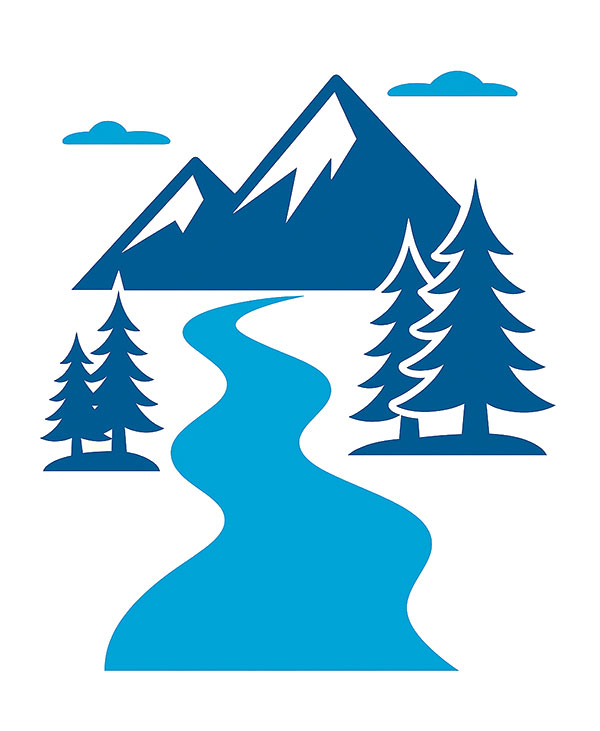
Watershed Dog Permits
Fortunately, residents of Big Cottonwood Canyon are permitted to have dogs at their homes, provided they obtain a Watershed Dog Permit. The trade-off is that we are held to a higher standard of responsibility than typical dog owners.
Residents may apply for a Watershed Dog Permit through Salt Lake County Animal. The permit application requires the applicant to submit:
- Plans for housing the dog
- Proposed method of daily animal waste disposal
- A written statement agreeing to:
- Microchip the dog
- Keep the enclosure clean and sanitary at all times
- Dispose of waste daily
- Ensure the dog wears the required watershed tag or identifier at all times
- Adhere to all Salt Lake County Animal Control Regulations (including vaccination requirements) and the Salt Lake County Watershed Regulation
- Keep the dog on the property except when entering or leaving via vehicle and keep the dog leashed when walking to and from your vehicle
The application is then reviewed by the Salt Lake County Health Department. A site inspection of the property and dog enclosure is conducted. If approved, the applicant pays applicable fees and surety bond, and the permit is issued by Salt Lake County Animal Services.
Responsible Dog Owners
For residents with watershed permits, the best way to demonstrate responsible canyon dog ownership is by cleaning up waste and keeping dogs on leash and under control. In my experience, the overwhelming majority of dog owners in Brighton meet and exceed this standard of considerate and responsible ownership.
Change I’d Like to See
First, I would like the town to work with the Salt Lake Valley Health Department to make a commonsense update to Section 4.3(v)c of the Watershed Regulation. This change would allow residents to walk leashed dogs in public areas off their property, not just when entering or leaving from a vehicle.
Second, I would like to see the very small minority of dog owners who don’t leash their dogs or clean up after them follow the example set by all of the other dog owners. As a community, we are capable of holding ourselves to a higher standard and upholding the rules we’ve agreed to follow. By doing so, we respect our neighbors and protect our canyon’s wildlife and watershed.
History of Domestic Animal Restrictions in the Salt Lake Watershed
I’ve had several people tell me they feel the rules on dogs in Big Cottonwood Canyon are unfair or unnecessary. But there’s a clear historical reason for these restrictions. The clean water we take for granted today is the result of decades of public effort and investment to build and maintain Salt Lake City’s water infratructure.
The Early Water Supply in Salt Lake
Salt Lake City’s first drinking water came from City Creek in 1847, soon followed by Emigration, Parleys, Mill, Big Cottonwood, and Little Cottonwood Creeks. For nearly a century, these watersheds were largely unregulated. Lifestock grazing, mining, and settlement extended into the watershed areas, with cattle and sheep commonly pastured along creek corridors. These practices, while vital to pioneer survival, contributed to bacterial contamination in the water supply. Water quality in Salt Lake City varied, and by the 1940s contamination had grown serious enough to for waste accummulation in City Creek to cause a typhoid outbreak.
Federal Intervention
In 1947, the U.S. Public Health Service (USPHS) evaluated Salt Lake City’s water under new national standards. The report found major deficiencies and threatened to revoke the city’s approved water rating, which would have barred interstate carriers from filling in Salt Lake. To keep that approval, USPHS recommended restricting development in the canyon watersheds until water filtration systems could be built.
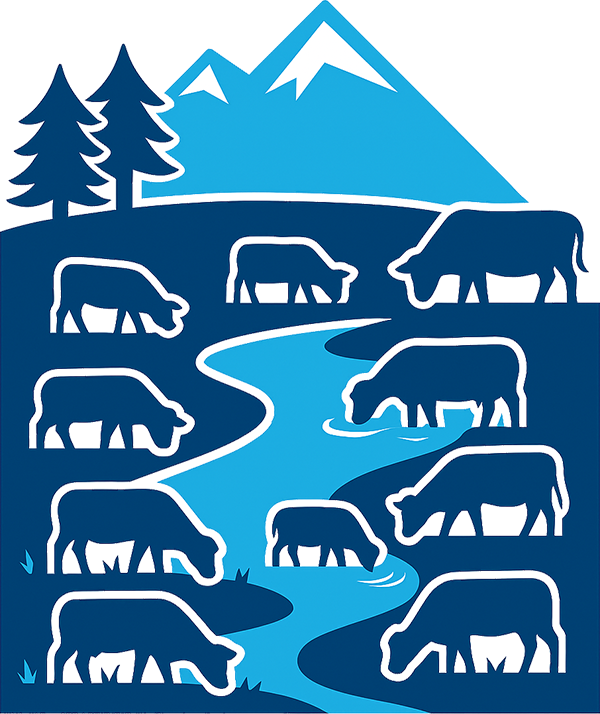
The Water Purification Program
Salt Lake City responded to the USPHS by initiating a 28-year water improvement program, known as the Water Purification Program. These projects were intended to provide the public safer and cleaner drinking water by implementing source protection, purification technology, and adhering to new federal and state regulations.
A 1950 study by the Metropolitan Water District of Salt Lake City made the following comments about Big Cottonwood Canyon:
- The canyon is affected by recreation throughout its entire length
- Big Cottonwood Canyon, perhaps more than any of the canyons, should have sanitation facilities that meet public health standards
- Special efforts should be made to police the canyon and educate the public throughout the year
- Improvement of the chlorination system and hiring personnel that are trained to operate the facility
- Recommendation to bypass flows when the turbidity reached 10 parts per million
- Construction of the Argenta Dam to take advantage of the natural purification process in the reservoir (ultimately defeated in a bond election and never built)
The Big Cottonwood Water Treatment Plant
In 1953, the State Department of Health and Salt Lake City approved construction of treatment plants on every canyon stream used for drinking water. The Big Cottonwood Water Treatment Plant was completed in 1957 at a cost of $1.1 million, with filters added a year later for $400,000.
Results and Legacy
By the 1960s and 70s, Salt Lake City’s water was steadily improving, though still rated “Provisionally Approved” by USPHS. On June 5, 1975, after decades of effort, the city’s water supply was officially upgraded to an “Approved Rating.”
Watershed protections were strengthened in the following decades, including a new master plan in 1988, a canyon water sales ordinance in 1991, and the prohibition of domestic animals in the watershed and the end of livestock grazing. Salt Lake City’s Watershed Management Plan was updated in 1998 and again in 2014
Why Restrictions Exist Today
The safe drinking water Salt Lake City enjoys today is the direct result of the multi-decade efforts and legacy of the Water Purification Program. Watershed protection and water treatment are the primary defense against harmful organisms from reaching the taps of city residents.
Big Cottonwood Canyon and the 1998 Watershed Management Plan
Below are specific plan recommendations for Big Cottonwood Canyon and other interesting items from the 1998 Watershed Management Plan (click the image to zoom in):
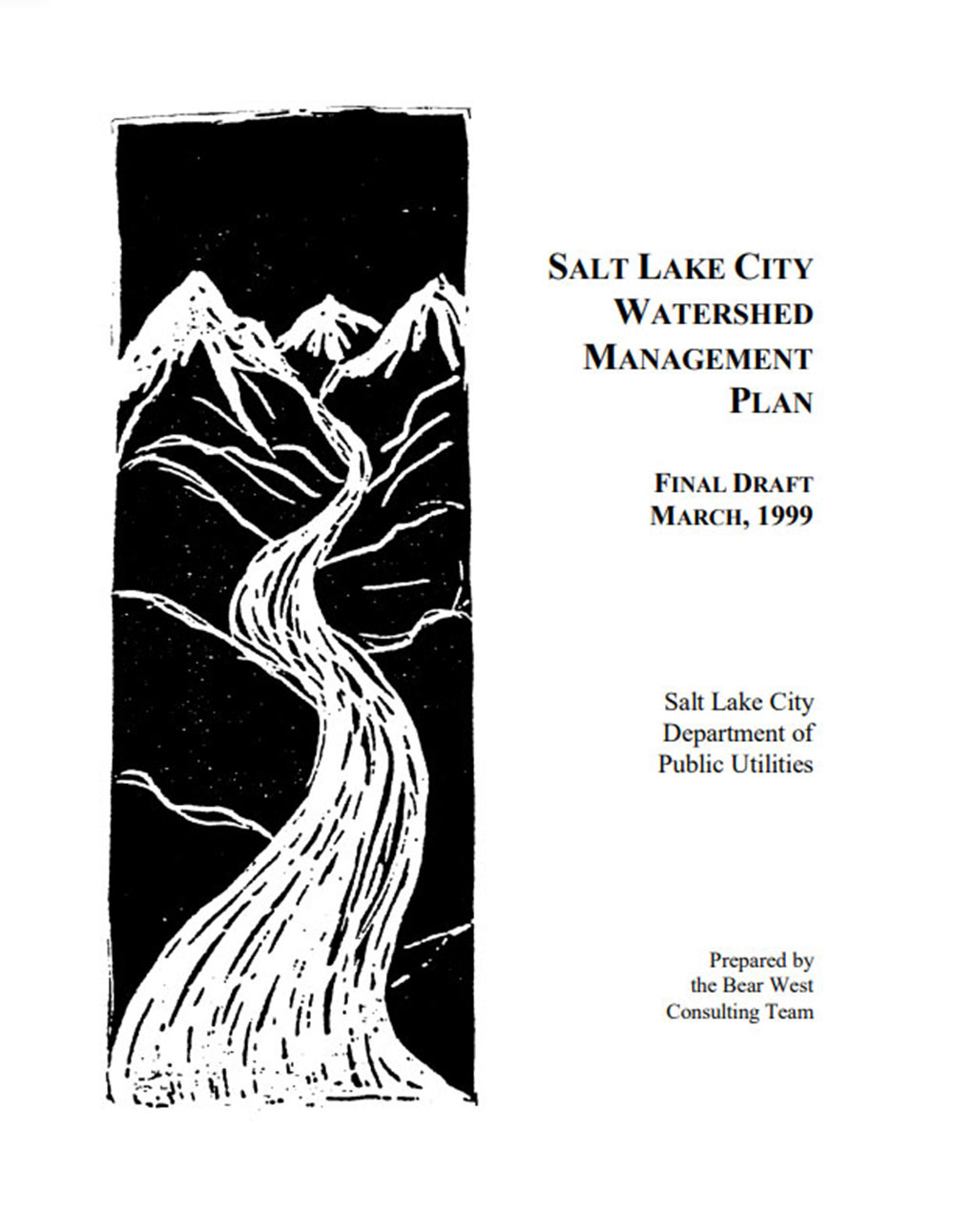
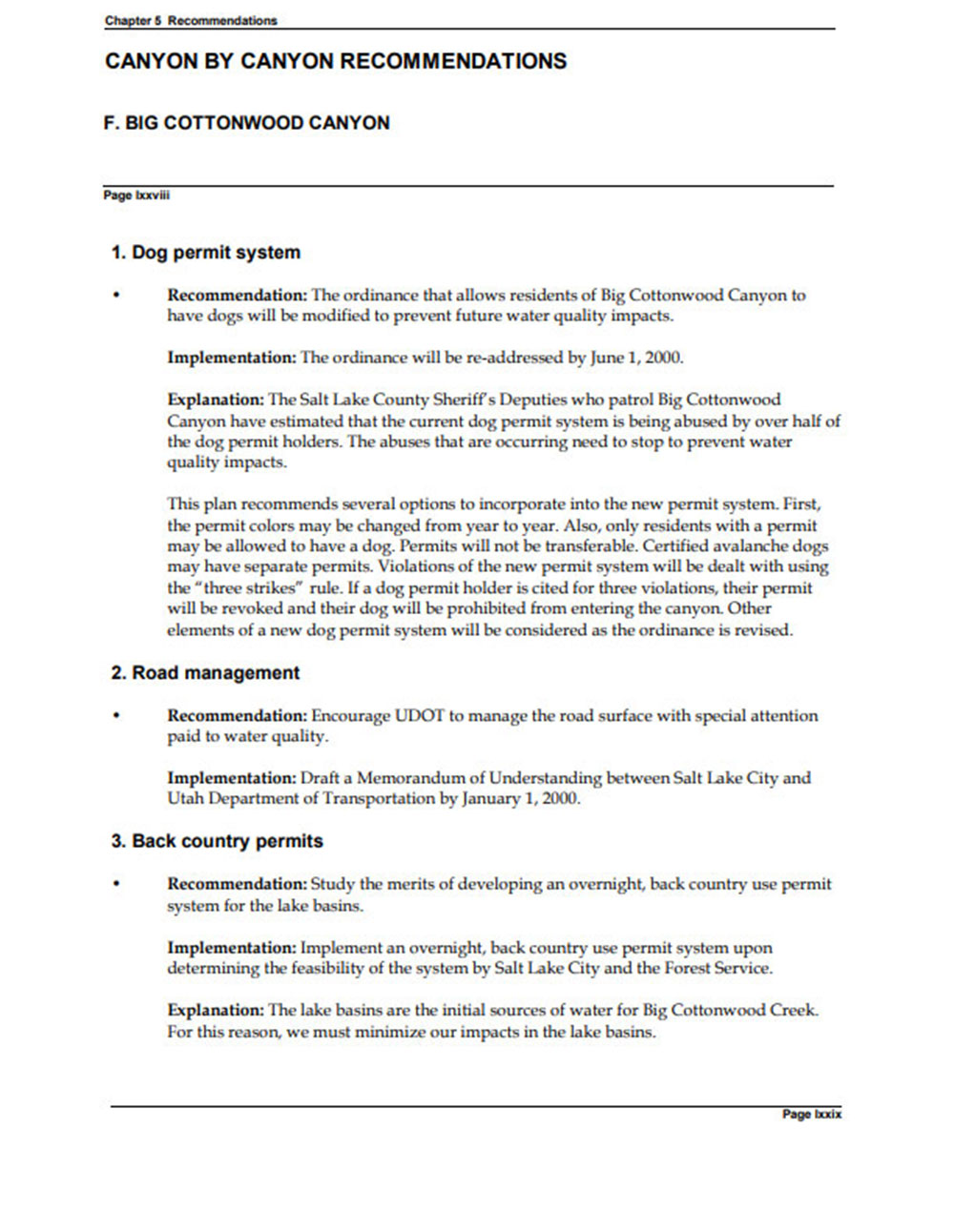
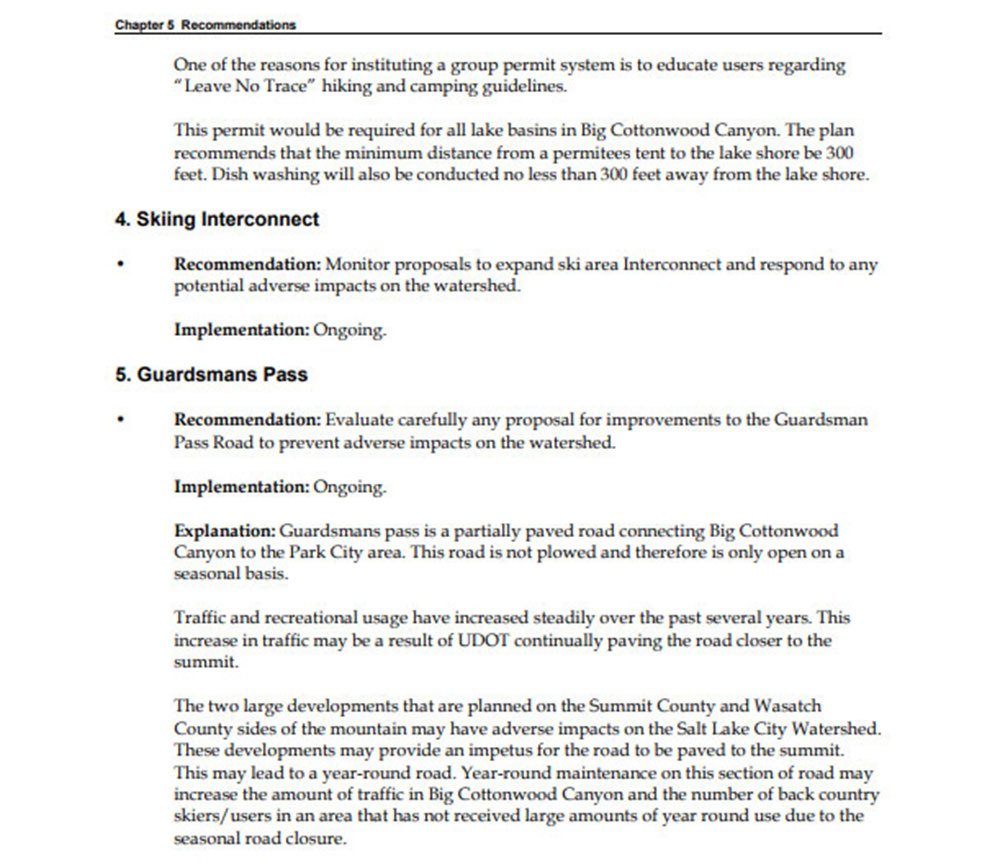
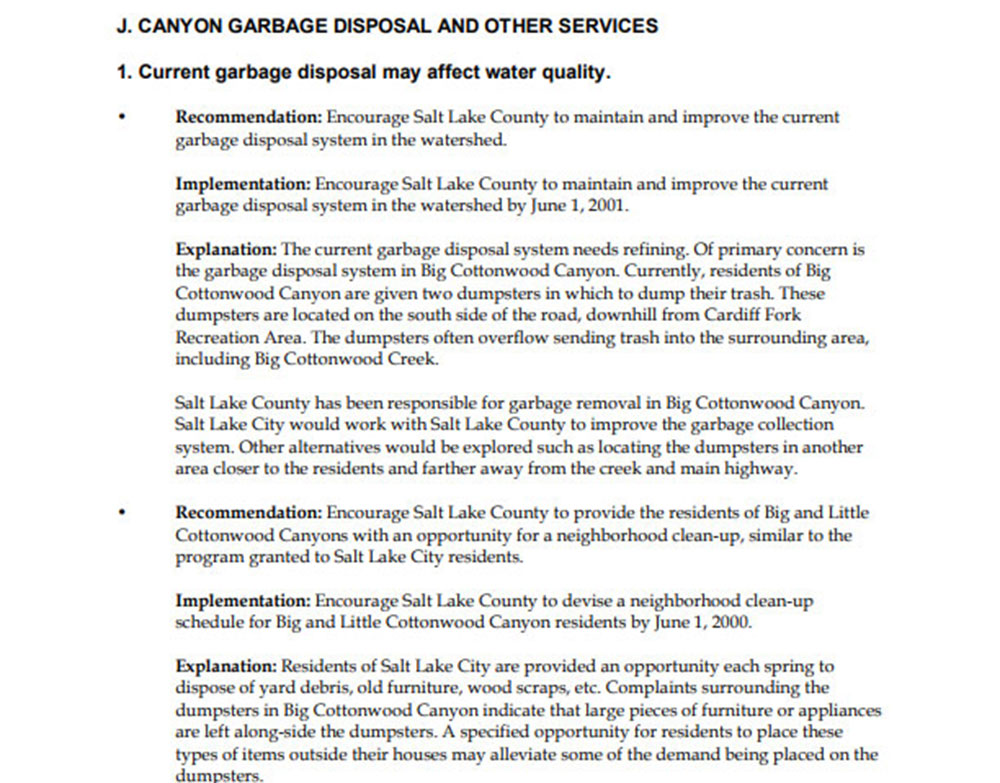
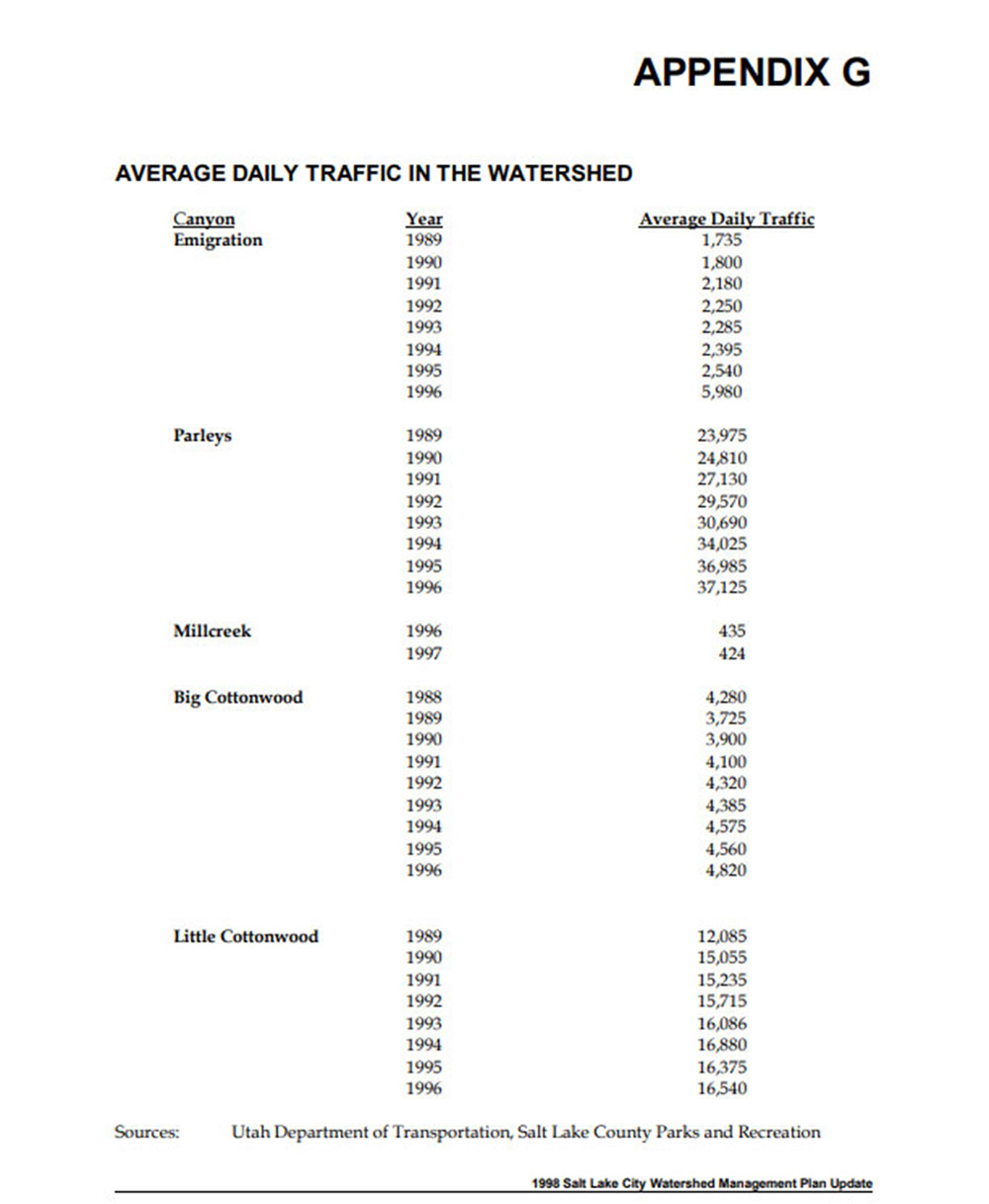
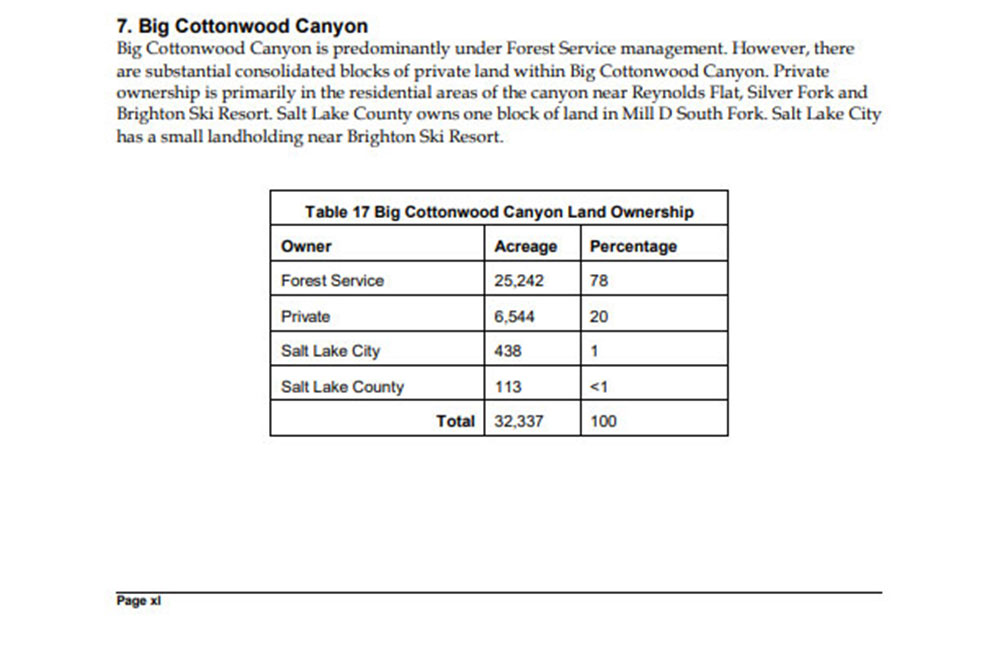
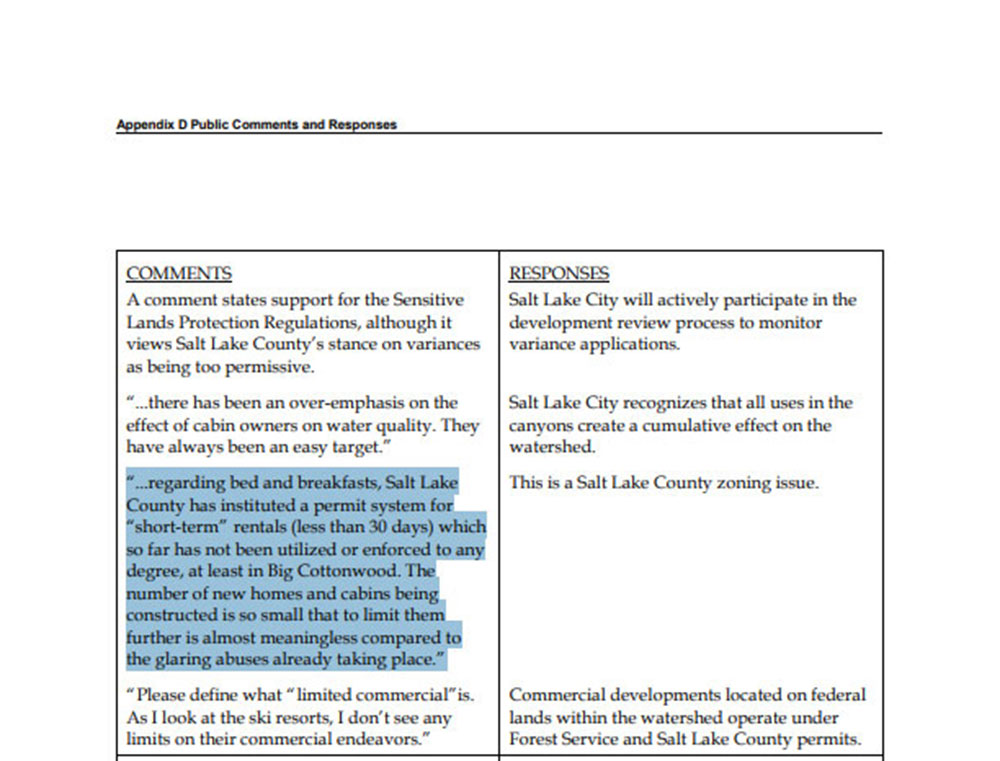
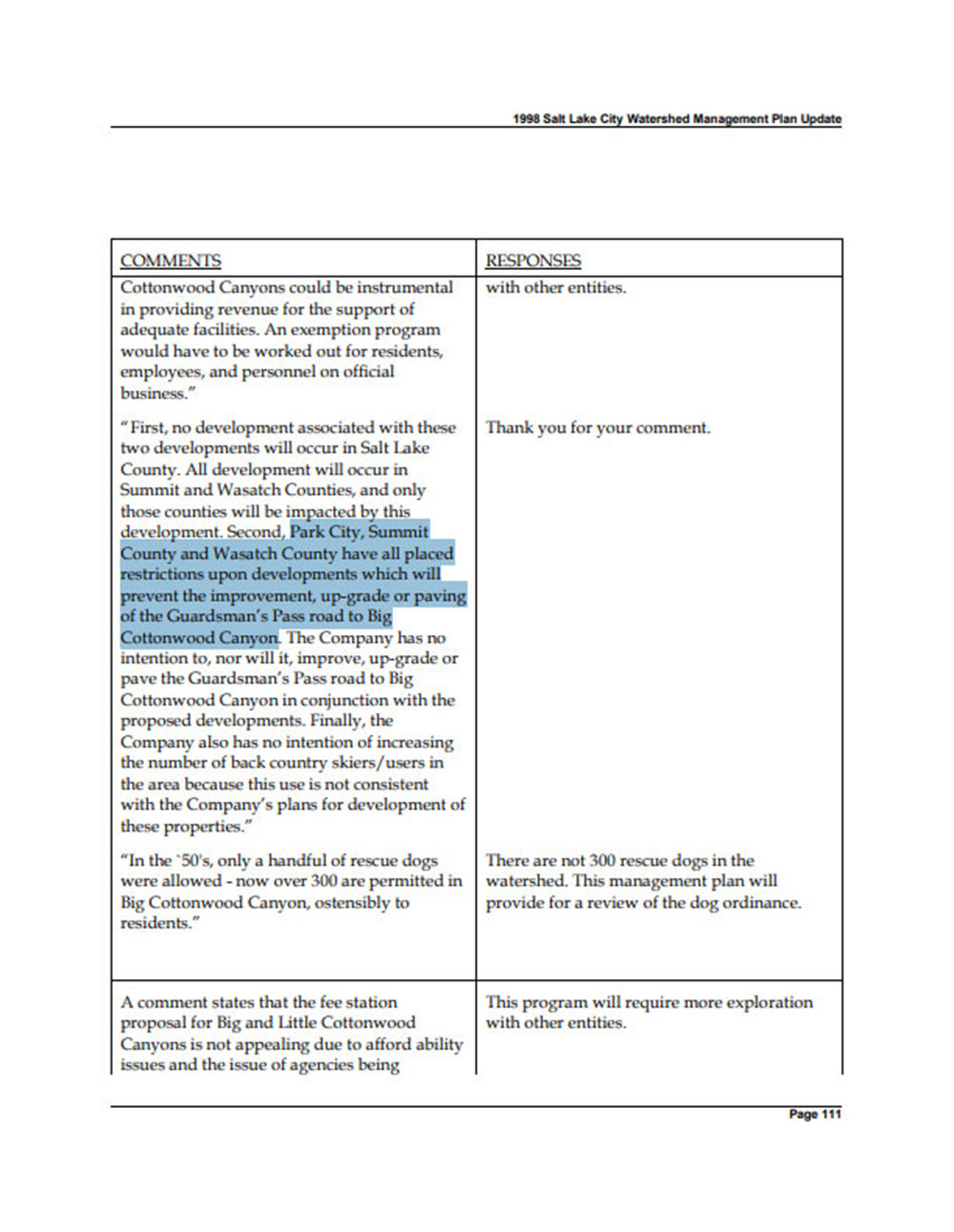
Sources
Central Wasatch Commission
Watershed History Dashboard – Central Wasatch Commission cwc.utah.gov/central-wasatch-dashboard/vegetation/watershed-history
Salt Lake City Department of Public Utilities
City Creek: Salt Lake City’s First Water Supply – LeRoy W. Hooton, Jr. (May 1975, reissued) slcdocs.com/utilities/pdf%20files/story.pdf
Salt Lake City Watershed Management Plan – Salt Lake City Corporation (1998) slcdocs.com/utilities/PDF%20Files/slcwatershedmgtplan.pdf
ARGENTA: The Dam That Wasn’t – LeRoy W. Hooton, Jr. (Sept. 13, 1999) slcdocs.com/utilities/NewsEvents/news1999/news091399.htm
Water Purification Program – LeRoy W. Hooton, Jr. (Nov. 18, 1999) slcdocs.com/utilities/NewsEvents/news1999/news11181999.htm
Watershed Management Plan – Salt Lake City Department of Public Utilities (2000) slcdocs.com/utilities/PDF%20Files/watersh.pdf
Salt Lake Tribune
Why City Creek Canyon is closing until 2027 – Sofia Jeremias (Oct. 21, 2023) sltrib.com/news/2023/10/21/why-city-creek-canyon-is-closing
Salt Lake City has too much control over watersheds, Utah official says – Brian Maffly (Jan. 24, 2017) sltrib.com/news/environment/2017/01/24/salt-lake-city-has-too-much-control-over-watersheds-utah-official-says
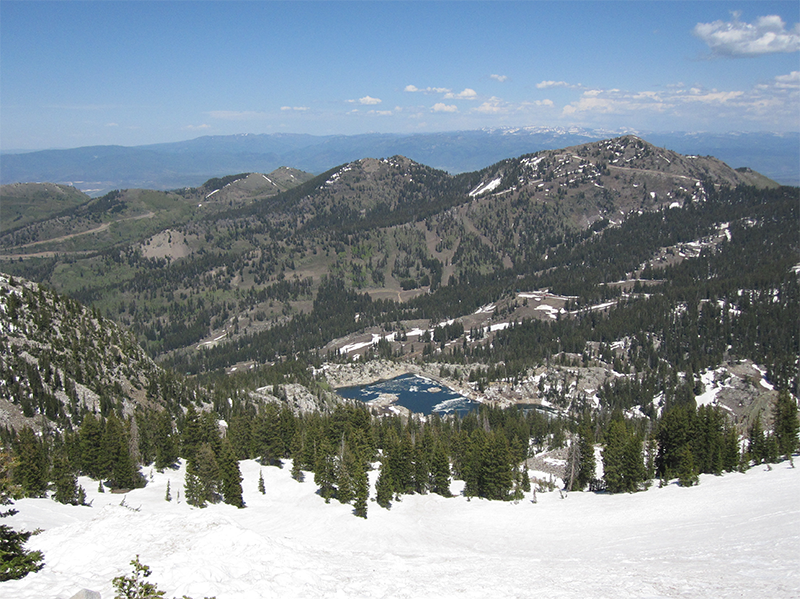
Please share your feedback.